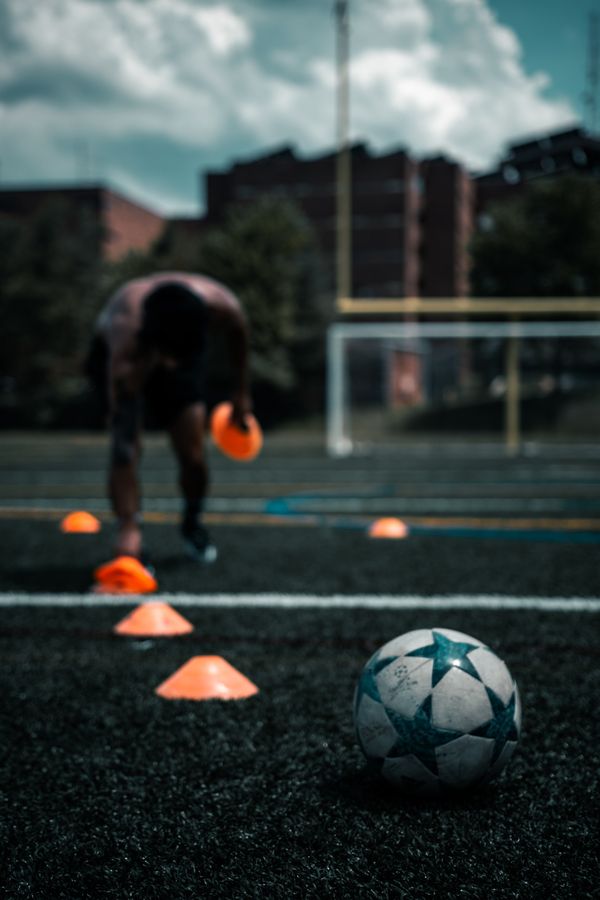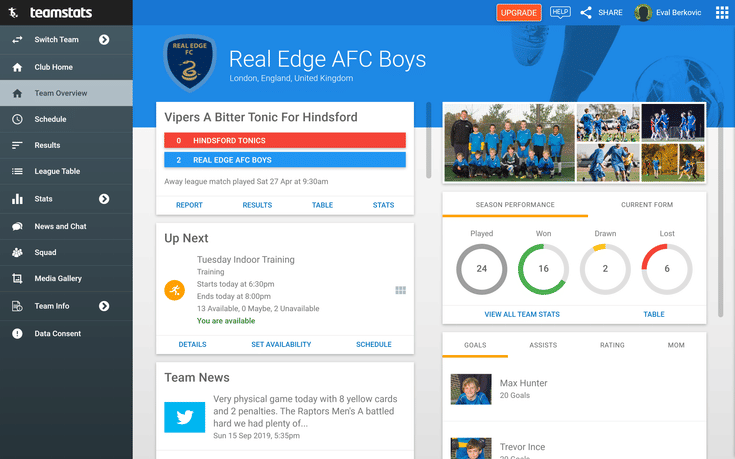Football coaching aids have become essential tools for amateur football clubs across the United Kingdom. From passing machines to tackle dummies, these training resources help coaches develop players' skills effectively while keeping sessions engaging. Quality football training equipment enhances player development by allowing for repetitive skill practice in realistic match scenarios.
Modern football training aids cover a wide range of needs, including blocking sleds, kicking cages, and solo trainers that players can use independently. These specialised tools enable coaches to create focused drills that target specific techniques needed for match day success. Many grassroots clubs are now investing in these resources to provide professional-level training experiences.
While the equipment used in American soccer may differ slightly, UK football coaches benefit from similar training aids adapted to suit the beautiful game as played on British soil. Today's comprehensive range of coaching equipment allows even amateur clubs to implement structured training programmes that develop technical abilities, tactical awareness, and physical conditioning simultaneously.
Essential Football Training Equipment
Equipping a football team with the right training gear enhances skill development and practice efficiency. The proper selection of equipment supports coaches in creating effective training sessions while ensuring players have the tools they need to improve their performance.
Football and Ball Bags
Quality footballs are the cornerstone of any training session. Coaches should invest in multiple balls appropriate for their team's age group and skill level. Training footballs should be durable enough to withstand daily use on various surfaces.
Ball bags are essential for storage and transportation. Look for bags with padded straps and reinforced bottoms that can hold 10-12 footballs. Many professional-grade ball bags include separate compartments for deflated balls and inflation equipment.
Some coaches prefer mesh bags for wet conditions as they allow moisture to escape. A well-organised ball bag system helps training sessions run smoothly without wasting time gathering equipment.
Portable and Durable Training Aids
Effective training requires equipment that can be easily transported between locations. Portable training aids such as:
- Agility ladders for footwork development
- Flat markers/discs for setting up drills
- Pop-up goals for small-sided games
- Training bibs/pinnies in different colours for team identification
Cones remain one of the most versatile pieces of equipment. They're lightweight, stackable, and can be used to create countless drills focusing on dribbling, passing, and positional awareness.
Durability is crucial for equipment that will be used regularly in all weather conditions. Look for items made from weather-resistant materials that won't degrade quickly when exposed to rain or sunshine. Many soccer coaching specialists recommend investing in slightly higher-quality equipment that will last several seasons rather than replacing cheaper alternatives frequently.
Techniques and Physical Training
Football training equipment plays a crucial role in developing player skills and physical abilities. The right tools can significantly enhance technique refinement, speed development, and overall skill improvement at every level of the game.
Tackling Techniques
Proper tackling fundamentals form the cornerwork of defensive play in football. Training dummies and tackle bags are essential for practising safe and effective technique without risking player injury.
These specialised tools come in various shapes and sizes, allowing players to work on different aspects of challenging for the ball. Blocking dummies help defenders practise controlled approaches and proper body positioning.
Shockwave leg chargers, as offered by manufacturers like Rae Crowther, provide realistic resistance for practising tackle timing and body control. These sophisticated pieces of equipment can cost upwards of £4,000 but represent a worthwhile investment for clubs serious about player development.
Many coaches integrate landing mats into tackling drills to ensure players can safely practise diving challenges and recovery positions. This focus on technique helps reduce injury risks whilst improving effectiveness in match situations.
Speed Training Essentials
Speed development is vital for footballers at all positions on the pitch. Agility ladders are a fundamental tool that improves foot speed, coordination and quick directional changes essential for match performance.
Training chutes force players to maintain proper running form whilst developing explosive acceleration. When used consistently, these devices help players develop the quick first steps needed to beat opponents to the ball.
Resistance training tools like parachutes and bungee cords provide variable resistance that strengthens key muscle groups. These implements create controlled resistance that players must work against, building the specific strength needed for explosive movements.
Cone drills remain a staple in speed training, with structured patterns that simulate game situations. Coaches can create custom drills targeting specific movement patterns relevant to match scenarios.
Skill Improvement Tools
Passing machines have revolutionised individual skill development, allowing players to practise reception and control without needing a training partner. These devices can deliver balls at varying speeds and trajectories, simulating different match situations.
Coach cards, like those from Puredrop, offer structured guidance for skill development sessions. These visual aids help players understand complex concepts and provide a framework for independent practice sessions.
SKLZ and similar brands provide specialised equipment for solo training, enabling players to work on specific techniques independently. These tools are particularly valuable for youth development programmes where individual skill refinement is paramount.
Rebounders and wall targets improve passing accuracy and first touch control. Regular practice with these tools develops the muscle memory essential for consistent technical performance under match pressure.
For goalkeepers, specialised equipment like reaction balls and reflex trainers develop the quick responses needed for shot-stopping. This targeted training approach addresses the unique requirements of the position.
Strategic Coaching Tools
Effective communication and planning are essential components of successful football coaching. The right tools not only enhance training sessions but also help coaches convey complex tactical instructions clearly to their players.
Coaching Boards and Playbooks
Tactical boards are indispensable tools for modern football coaches. These boards come in various formats including magnetic, foldable and portable options that allow coaches to illustrate formations, set pieces and game strategies visually. Many boards feature pitch markings and come with movable magnetic pieces representing players.
Lightweight tactical boards are particularly useful for making quick adjustments during matches. Coaches can easily demonstrate substitution plans and tactical shifts on the sideline. Some advanced boards include erasable surfaces where coaches can draw passing lanes and movement patterns.
Digital playbooks have also gained popularity, with many coaches using tablet applications to store multiple formations and set-piece routines. These digital solutions allow for more dynamic presentations and can be shared electronically with the entire squad.
Practice Drills and Game Scenarios
Structured practice drills transform theoretical tactics into practical skills. Cones, poles, and agility ladders create physical representations of game situations that players must navigate. These training aids help develop both individual skills and team coordination simultaneously.
Game scenario cards are becoming increasingly popular among grassroots coaches. These cards present specific match situations that teams must solve, improving decision-making under pressure. Many cards include diagrams of defensive and attacking scenarios with suggested solutions.
Stopwatches and whistles remain essential for maintaining training intensity and simulating match conditions. Timing drills correctly helps players develop the rhythm needed for competitive matches.
Video analysis tools now complement traditional coaching methods, allowing teams to review positioning and movement patterns. Even at amateur level, simple recording devices help coaches provide visual feedback on positioning and tactical execution during training sessions.













